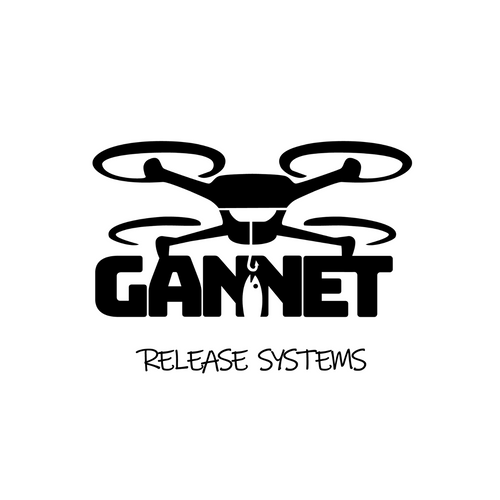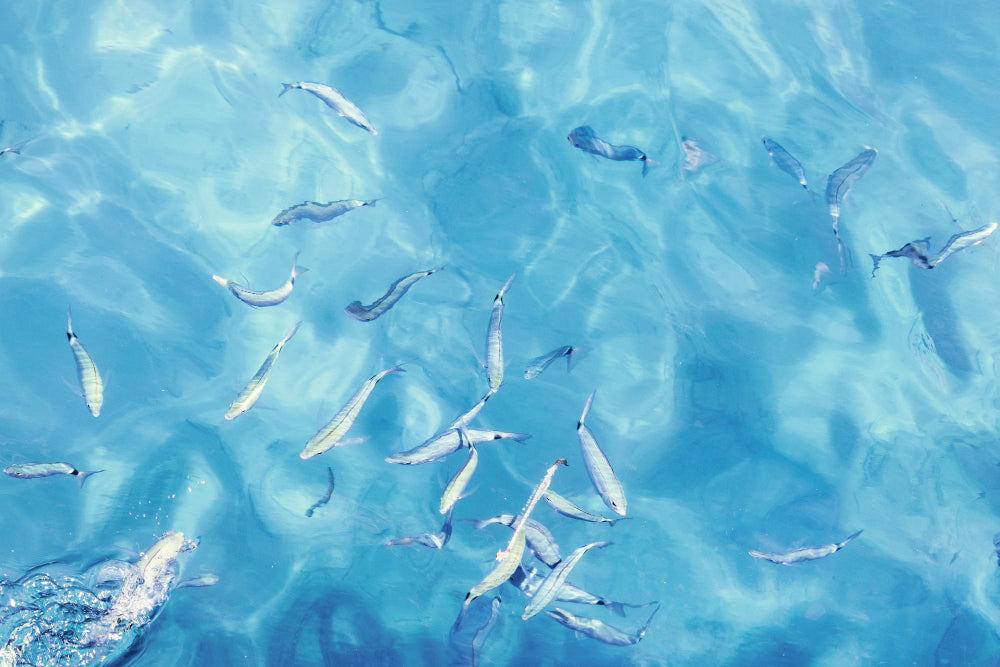
Fishing has been a popular hobby and sport for centuries, allowing anglers to get out on the water and try their luck at catching fish. However, modern technology is changing the age-old pastime with the introduction of drone fishing. Drones equipped with cameras and baits are taking fishing to new heights - and depths.
What is Drone Fishing?
Drone fishing involves using an unmanned aerial vehicle (UAV), or drone, to drop a bait or lure into the water in order to catch fish. The drones are typically quadcopters with four rotors that allow them to take off and land vertically. They are outfitted with a release mechanism that can drop the bait, along with an HD camera to transmit live video back to the pilot.
The pilot then maneuvers the drone into position over a promising spot in the water and drops the bait via remote control. The video feed allows them to monitor the bait and set the hook when they see fish biting. The drones are connected to a high-tension wire or fishing line that enables the catch to be reeled in.
Origins and Early Development
The idea of drone fishing originated in Europe around 2010, pioneered by enthusiasts who attached baits to their camera drones to try catching fish. It remained a niche activity until around 2013, when the technology advanced and became more affordable and accessible.
Companies began developing and marketing drones designed specifically for fishing. Features like GPS positioning, HD cameras, and app control made drone fishing an easier and more effective technique. The release mechanisms also improved, allowing baits to be dropped more precisely.

Benefits of Drone Fishing
Compared to traditional fishing methods, drone fishing offers some unique advantages:
Access to Remote Locations
Drones can reach distant spots that are difficult or impossible to cast to from shore or a boat. They allow fishing in hard-to-reach areas like beneath docks or overhangs, dense vegetation, or fast, deep-running water.
Perspective From Above
The aerial view provided by the drone gives a unique vantage point to spot fish that are otherwise hidden from view at water level. This bird's-eye perspective allows anglers to identify structures, depth changes, and cover that may be holding fish.
Precision Bait Delivery
Drone fishing enables unmatched accuracy when placing a bait in front of a target fish. The bait can be dropped precisely into tight spaces like under logs or around submerged trees. This pinpoint delivery maximizes the chance of a bite.
Monitoring Multiple Lines
With a drone doing the bait delivery, anglers can fish multiple lines in different locations at once. The live video feed allows them to monitor multiple spots simultaneously from shore or boat.
Equipment Needed
A full drone fishing setup requires a few key pieces of equipment:
Fishing Drone
There are drones built specifically for fishing that have integrated cameras, GPS, and release mechanisms. Or multi-purpose drones can be adapted with aftermarket parts. Key factors are stability, lift capacity, flight time, and range.
Camera & Transmitter
A live HD video feed is essential to monitor the bait and set the hook when fish strike. The camera and transmitter beam video from the drone to the pilot/angler.
Release Mechanism
This device attaches the bait to the drone and allows for it to be dropped remotely on command. Attach points like clips, hooks, or magnets securely hold baits.
Fishing Line
High-quality braided lines or steel leaders are used to attach the baits. Lines are tested up to 50+ pound strength to handle fighting big fish on the drones.
Baits/Lures
Live bait like minnows or cut fish work well, as do common artificial lures. Baits are matched to target species and water conditions. Weedless or snag-resistant designs prevent fouling.
Drone Controller
A remote control is needed to pilot the drone into position, maneuver it, and drop the bait. Controllers have an integrated smartphone or tablet to view the live video feed.
Rod & Reel
A fishing rod, reel, and tackle are used once a fish is on the line. The drone is either retrieved or the line detached so it can be fought with regular gear.

Drone Fishing Techniques
Drone fishing introduces new techniques and tactics while incorporating some fundamental fishing knowledge. Here are some effective approaches used in drone fishing:
Scouting Fishable Areas
The drone's mobility and aerial view make it a useful scouting tool over broad areas. Pilots can quickly identify spots holding baitfish, structure, drop-offs, etc. that are likely to hold gamefish. This allows anglers to hone in on the most promising spots.
Reading Water Conditions
As in boat fishing, reading conditions like water clarity, vegetation, flow, etc. allows adapting approaches for given conditions. Cleaner water calls for more finesse tactics while dirtier water accommodates bold, loud presentations.
Matching Hatch Presentations
Drones allow anglers to mimic a baitfish's natural food source with matching the hatch techniques. Dropping a lure that perfectly imitates a shad or bluegill into a school of baitfish triggers savage strikes from lurking predators.
Vertical Jigging
Over deeper water, vertical jigging can be deadly. The drone allows bouncing lures or live bait right over fish in deep areas that would be impossible to reach by casting. Fish often aggressively attack baits plummeting downward right in front of them.
Skipping and Pitching
The accuracy of drones excels at skipping baits into tight, hard-to-access spots beneath docks or overhanging trees. Skipping gets lures into shady hiding spots where big fish camp out. This tactic produces when other presentations fail.

Drone Fishing Applications
Drone fishing provides advantages across a range of fishing situations:
Lake & Pond Fishing
For bank fishing spots without room to cast, drones allow reaching distant weed edges, lily pads, docks, and fallen timber that can hold lunker bass and other species. Easy access to prime structure lets anglers thoroughly work high-percentage areas.
RIVER & stream Fishing
On rivers, drones can hopscotch bait from current seam to current seam, hitting the prime feeding lanes. Boulders, logjams, and blown-down trees are easily dissected. And hard-to-wade areas of fast, deep water become fishable.
offshore & Open Water
In big water, drones can place baits on precise spots over wrecks, reefs, ledges, or rigs. Instead of chumming and waiting on fish to come to the boat, baits can be brought straight to their offshore lair.
Ice Fishing
Drone fishing provides a major advantage over standard ice fishing methods. Without having to cut rows of holes, anglers can quickly sample numerous spots,ifically following schools of fish on the move. No longer tethered to a single hole, the possibilities expand exponentially.
Commercial & scientific
Drones have commercial applications like surveys/assessments where they sample fish populations and distribution. They also assist in tasks like locating invasive species. Drones cause less disruption than traditional sampling methods.

Species Targeted with Drones
The techniques of drone fishing lend themselves well to pursuing all sorts of sport fish:
Bass
From largemouth to smallmouth, spotted to striped, bass readily attack prey dropping from above. Drones excel at precisely placing lures among bass cover and structure.
Trout
Trout cruise open water in lakes and pause behind boulders in rivers, spots ideal for drone delivery. The element of vertical surprise triggers savage strikes.
Walleye
Walleye often suspend off breaks or over humps which are challenging to cast to. Drones place jigs and live bait right on target, mimicking injured baitfish vulnerable to attack.
Pike & Muskie
Aggressive pike and muskie are ideal targets for drone fishing. The live action of reaction baits on a fast sinking line drives these predators into a frenzy.
Carp & Catfish
Waiting for carp and catfish to come to shorelines is hit-or-miss. Drones locate them in channels and depth zones, dropping baits directly to bottom-feeding fish.
Salmon & Steelhead
In rivers, drones sidestep traditional salmon and steelhead lies, dropping roe bags into slots and seams behind boulders that fishermen can't reach.
Many popular inshore species come within range of shoreline drones:
Surf Zone Species
- Striped bass
- Bluefish
- Pompano
- Whiting
- Croaker
- Flounder
- Jack crevalle
- Ladyfish
Nearshore Species
- Spanish mackerel
- Bluefish
- Cobia
- King mackerel
- Tarpon
- Sharks
- Jack crevalle
- Bonito
Reef & Wreck Dwellers
- Snapper
- Grouper
- Sheepshead
- Black seabass
- Triggerfish
- Amberjack
- Spadefish
Regulations & Legal Considerations
Despite its growth, drone fishing does have some legal gray areas that anglers should consider:
- Fishing license - In most areas, a valid fishing license is still needed even when drone fishing. The licensed angler claims the catch.
- Drone registration - Recreational drones typically need to be registered with the FAA in the US. Rules differ in other countries.
- Body of water permissions - Special use permits or restrictions may govern drones around certain bodies of water, especially reservoirs and hydro dams.
- Protected fish - Targeting certain protected fish species exclusively by drone may be prohibited without special allowance.
- Safety - Safe operation is paramount, avoiding areas such as airspace near airports. Collisions with low overhead wires or power lines also pose risks.
- Privacy - As with any drone usage, operating considerately regarding privacy is important. Responsibly avoiding residential areas and not invading others’ privacy is a must.

The Future of Drone Fishing
Drone fishing is still in its infancy but continues gaining popularity. Ongoing innovations will further advance drone capabilities and accessibility for anglers. Here are some possible developments on the horizon:
- More affordable drones designed specifically for fishing, lowering the barrier to entry for casual anglers
- Advanced camera, GPS, and stabilization technology enhancing the precision of bait delivery and ease of operation
- Integration of data like depth maps, bottom contours, and fish finder sonar to pinpoint fish hotspots
- Onboard fish recognition AI (artificial intelligence) automatically identifying and tracking certain species
- Incorporation of AR (augmented reality) into the video feed to overlay relevant fishing data onto the angler's view
- Sophisticated swarm capabilities where multiple drones can coordinate to scan expansive sections of water
- Increased adoption for activities like ice fishing, fly fishing, bowfishing and even noodling - expanding the possibilities of drone fishing even further
The popularity and capabilities of drones ensure an exciting future lies ahead for drone fishing. Anglers who adopt this cutting-edge technique today will hold a distinct advantage that likely will soon become commonplace. Drone fishing offers a glimpse into the future of the age-old sport.





